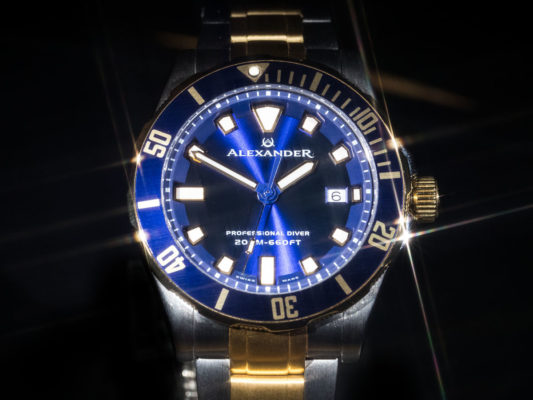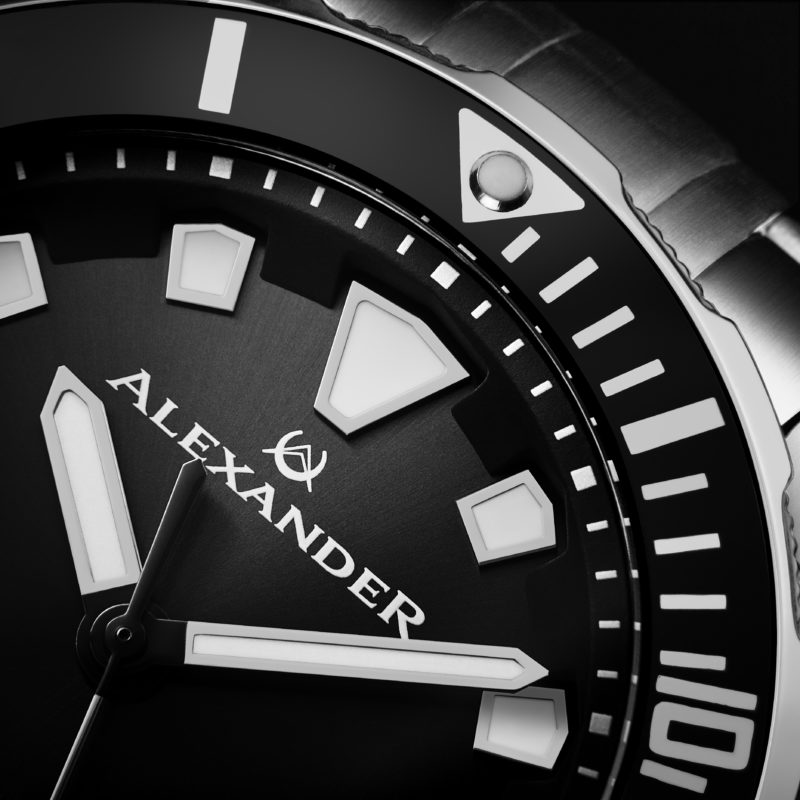Luminescence is a must for scuba divers, who need to read the time in deep, dark waters and gauge their remaining oxygen. But the rest of us like to know the time, too, especially when pulling out your phone might ruin the mood or wreck your device.
Ever wondered why diving watches have that little pip at the top of the bezel? It’s so divers can keep it analog and still tell how much oxygen is left in their tanks. The rotating bezel is luminescent and works in tandem with luminescent hands and markers, so divers can do the math on staying alive underwater.
If you were to accidentally knock the bezel out of place, you’d still be safe, too. The bezel only rotates in one direction. If it’s off, it’s off in favor of you getting to the surface before you run out of time.
But not everyone is going to use the luminosity on a watch like Vathos for diving. It’s nice to know it’s there if you need it, but it’s just as nice to be able to read your watch in the dark without it being a life-or-death scenario.
Who really wants to pull out their phone on a moonlit stroll or when the night gets turnt up in a club? Your screen’s blue light is good for a lot, but it lacks the charm and story of luminescence.
It’s this writer’s opinion that contemporary luminescence—or lume, as watch people like to call it—is not just warmer on the color scale, but warmer in feel, too. Nights are meant to be dark. A little lume goes a long way.

Luminescence wasn’t always so great. Like many things in our lives today, technology has made it safe, reliable, easy to use, and accessible.
Today’s lume is actually photoluminescent strontium aluminate.
A mouthful, yes, but a non-toxic mouthful, especially compared to the radium luminescence that poisoned 1920s watch painters, who were told to lick paint brushes to keep the ends fine.
Radium was first replaced by tritium and promethium, which had much lower levels of radiation.
The luminescence of watches used to be measured by half-life. This is an exponential measurement that looks at how long it takes for brightness to reduce by half.
Radium’s half-life is around 1600 years. Tritium’s is around 12, and promethium’s is about 17.
Those last two don’t last a very long time, considering horology spans centuries and even modern watches are often slated to become heirlooms. Plus, both chemicals are still radioactive.
Super-LumiNova lasts the entire lifetime of your watch. It doesn’t fade, decay, or age.
Luckily for watch enthusiasts, the Japanese enterprise, Nemoto & Co. introduced a LumiNova pigment in the early 1990s. Later, it partnered with Swiss-based RC TRITEC to produce Swiss Super-LumiNova.
Similar photoluminous compounds are marketed under other brand names, but Super-LumiNova, as used in diving or sport watches like Vathos or Nikos, has become the modern standard for watch luminescence.
The self-luminous compound absorbs sunlight or artificial light and then re-emits that light in darkness with a glow that lasts for hours. Super-LumiNova suffers no aging or decay. As long as your watch exists, Super-LumiNova continues to illuminate its dial or bezel.







